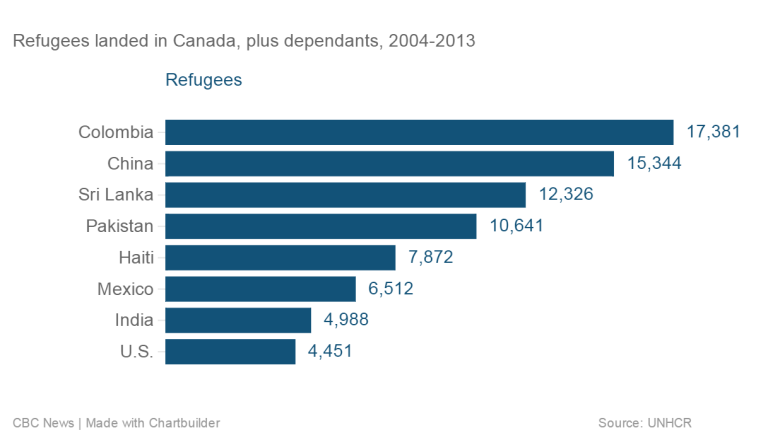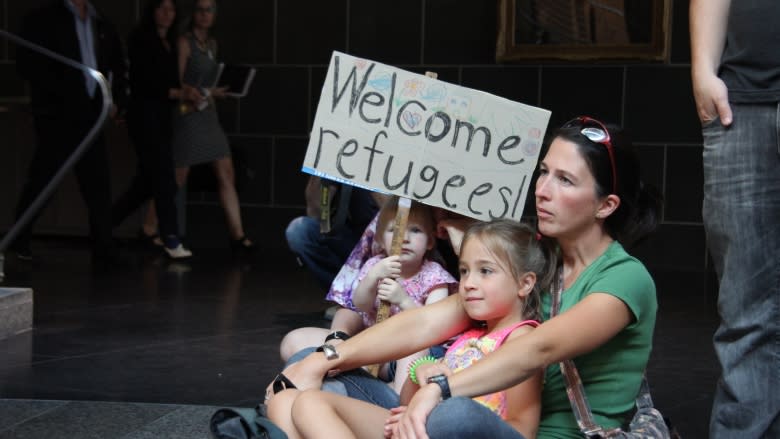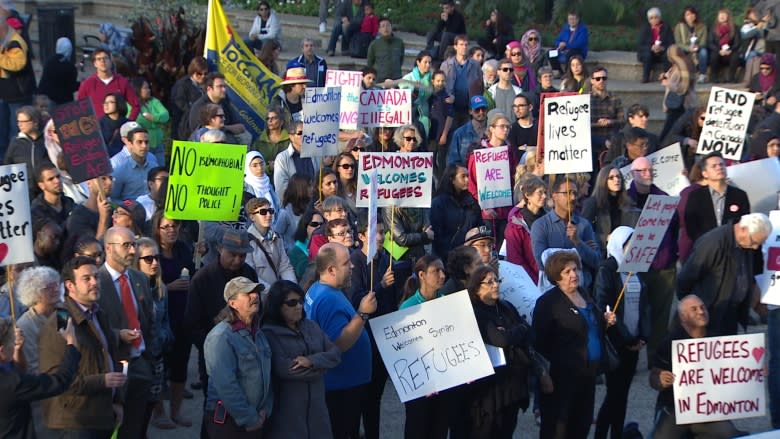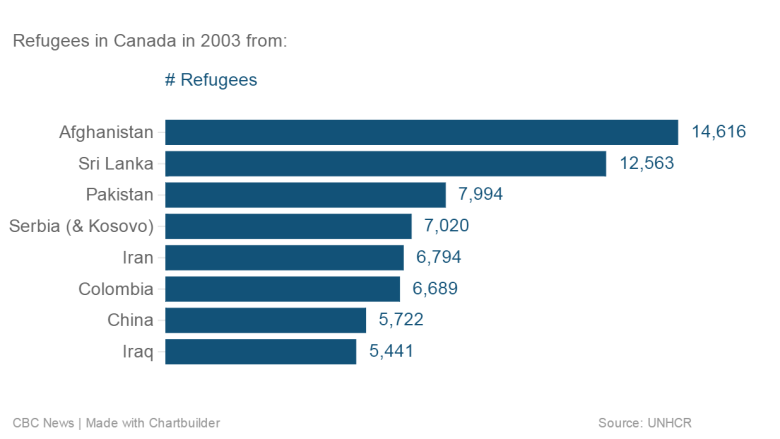Canada's refugees: Where they come from by the numbers
Refugees from nearly every country have come to Canada over the years. And often the countries they came from reflect the history of international crises, like Syria and Iraq today or Chile and Bangladesh in the 1970s and Sri Lanka and Haiti more recently.
Over the last 10 years, about 26,000 refugees arrived in Canada annually, according to numbers from Citizenship and Immigration Canada.
Of that number, an average of about 11,000 were refugees who came to Canada and successfully claimed refugee status and 4,000 were their dependants. Seven thousand refugees received government assistance to resettle in Canada, and 4,000 were privately sponsored.
In 2014, 23,285 refugees were admitted to Canada, In recent years, refugees have accounted for slightly less than 10 per cent of all immigrants who come to Canada.
The federal government recently announced plans to resettle 10,000 Syrian refugees (government-assisted or privately sponsored) over the next year, slightly less than the 12,310 refugees from all countries who resettled in Canada in 2014.
Syrians are also coming to Canada and filing asylum claims, which are almost all approved. That was the case for 678 Syrians in 2014. (Resettled refugees don't file a claim.)
Colombia No. 1 source country
The United Nations refugee agency, UNHCR, provides data for the countries where refugees have successfully sought asylum. During the 10 years from 2005 to 2014, about 150,000 refugees and their dependants became permanent residents of Canada, after claiming refugee status.
Refugees from eight countries account for half that total, with Colombia topping the list at 17,381.
Internal conflict has engulfed Colombia for the past five decades, says University of British Columbia professor Pilar Riano-Alcala, and civilians have been a major target of the military, the leftist guerillas and the right-wing paramilitaries.
"One of the key strategies of all the armed actors, in terms of the war, is forced displacement of the civilian population," says Riano, a leading expert on Colombian refugees who did research for the Historical Memory Commission in Colombia.
The UNHCR estimates there are 360,000 Colombian refugees and six million people inside Colombia who have been forced from their homes.
Canada has been a major destination for Colombian refugees, helped by a Canadian policy that allows Colombians to request asylum while still in Colombia, Riano says.
China, Sri Lanka, Pakistan and Haiti follow Colombia on the UNHCR list for the start of 2014 .
The UNHCR recognizes people as refugees if they have fled their own countries, have a well-founded fear of persecution because of their race, religion, nationality, social group or politics and are unable or unwilling to receive protection from their government should they return.
Iraq No. 1 for refugees admitted in 2014
A different list emerges for 2014, looking at all refugees admitted, regardless of category.
Iraq was the top source countrry, followed by Eritrea, Iran, Congo and Somalia. Syria ranks sixth. The top eight countries accounted for half of all the refugees admitted.
Iraq was also the top-ranked country for government-assisted refugees admitted in 2014. Iran, Congo, Somalia and Eritrea also rank in the top five, which account for two-thirds of all government-assisted refugees admitted.
Eritrea ranks first for privately sponsored refugees, followed by Syria, Somalia, Iraq and Afghanistan. Those five countries account for three-quarters of the privately sponsored refugees admitted to Canada in 2014.
During the five years from 2010 to 2014, more than 17,000 Iraqis were resettled to Canada.
Haiti, Colombia, Afghanistan and Somalia also rank near the top of the list for refugees admitted during those five years.
CIC data show that Iraqis topped the list for the number of government-assisted refugees admitted each year from 2010 to 2014, except 2012, when they came in second by seven refugees, behind Bhutan. Iraqis also topped the list of the number of privately sponsored refugees admitted 2010-2013.
Mexico ranked first for refugees who had been granted asylum in Canada and then received their landed immigrant (permanent resident) status in 2014. Haiti, Pakistan, China and Nigeria ranked next, perhaps reflecting the time lag between when a refugee gets accepted in Canada and gets landed immigrant status. Haiti ranked first from 2011 to 2013.
China No. 1 for refugee claims accepted by IRB
Refugee claims go to Canada's Immigration and Refugee Board. The board can accept or reject a refugee's claim, or the claimant may withdraw or abandon a claim.
During the 10 years from 2005 to 2014, the IRB received almost 100,000 refugee claims, with an overall acceptance rate of 41 per cent for finalized claims. The board rejected slightly more applicants than it accepted, IRB numbers show.
In 2014, the acceptance rate was 49 per cent, the highest it had been since 1995.
In the first six months of 2015, IRB data provided to CBC News shows the board accepted 5,006 claims and rejected 3,091. The acceptance rate increased to 56 per cent. The rejection rate was 35 per cent, down from the 43 per cent over the previous 10 years.
Refugees from China had the most claims accepted, followed by Pakistan, Hungary, Iraq and Syria.
94% of Syrian applicants accepted
Looking only at refugee applications from the 42 countries for which the IRB finalized 50 or more cases during the first six months of 2015, Syria had the highest acceptance rate, 94 per cent.
From 2006 to 2011, the acceptance rate for Syrian refugees averaged about 52 per cent. Since 2013, that rate has been more than 90 per cent.
On Sept. 18, the IRB began to review refugee claims by Syrians already in Canada under an expedited process. That means some claims won't require a hearing.
After Syria, the next highest acceptance rates were from Eritrea, Iraq, Libya and Egypt.
North Koreans had no refugee applications accepted by the IRB and 26 rejected. That means they had the lowest acceptance rate among the 42 countries, with Romania (1.4 per cent), the U.S. (2.8 per cent), Croatia (22.3 per cent), and Guinea (34.5 per cent) following.
The IRB accepted refugee applications from 121 countries in the first six months of 2015.
- NEXT: Canada's refugee claimants: Where they come from by the numbers







